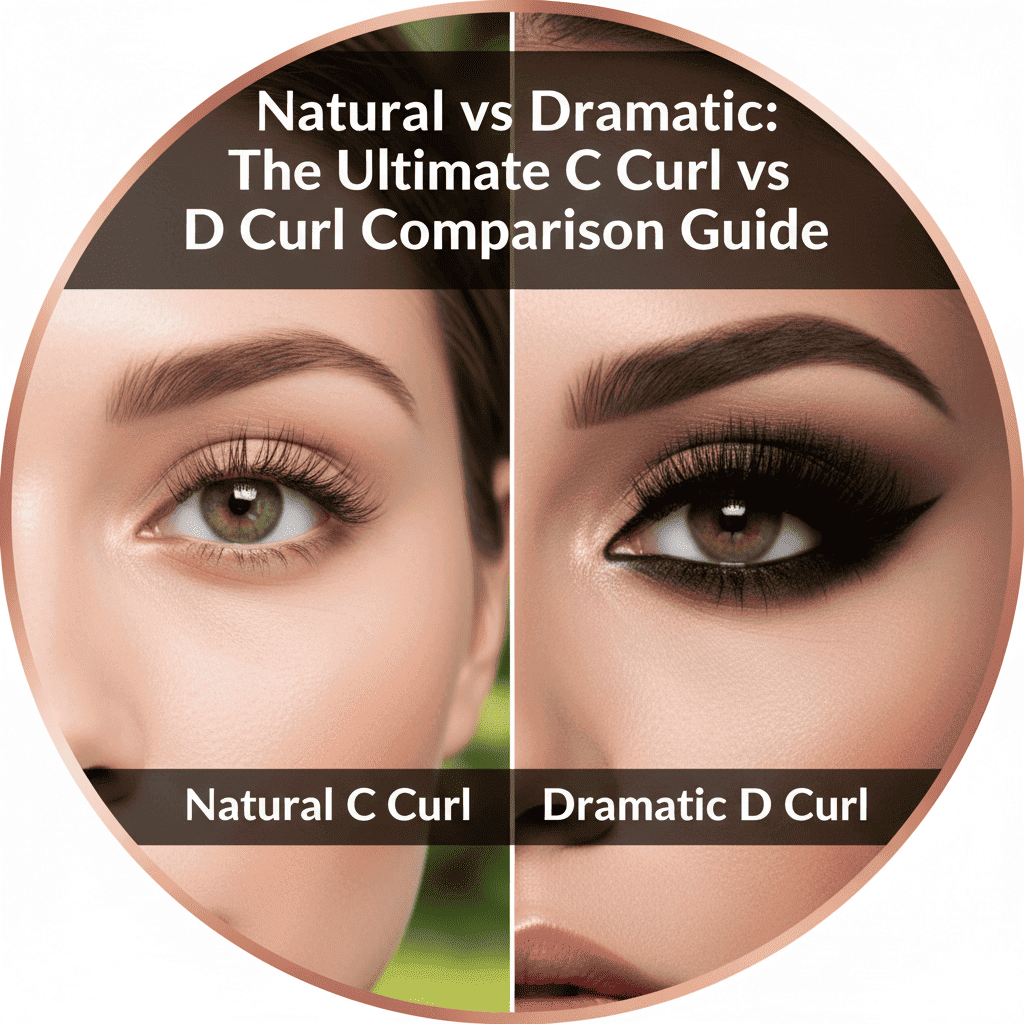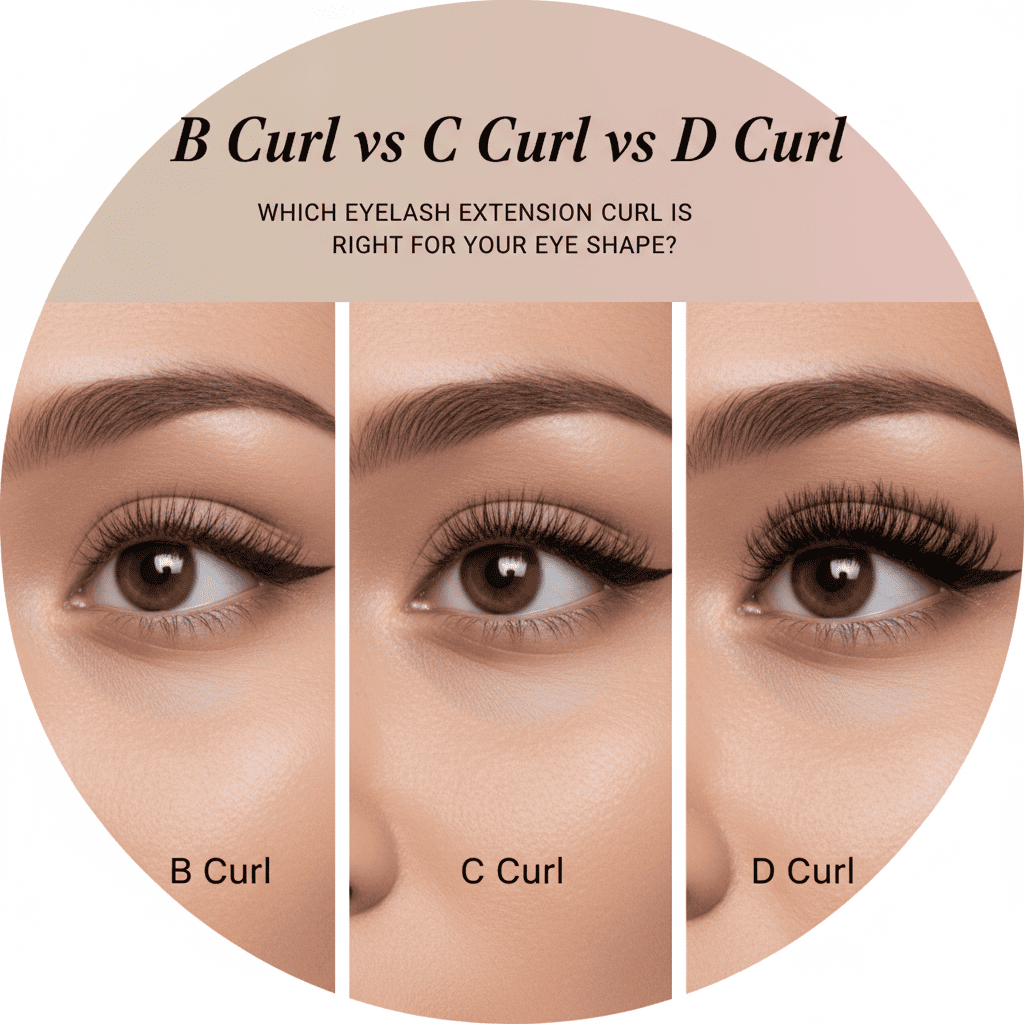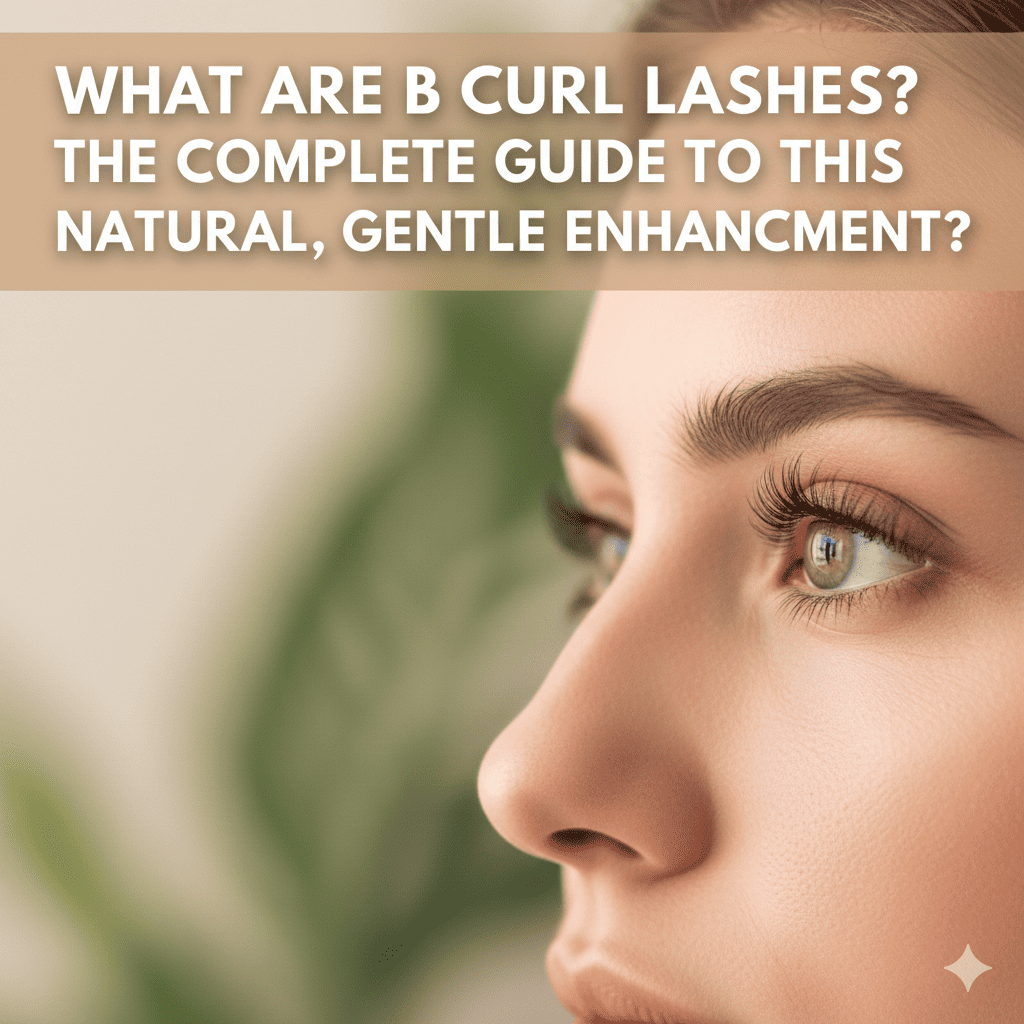What Are Lash Extensions Made Of? A Comprehensive Guide 2024
Introduction
Overview of Eyelash Extensions
Eyelash extensions have taken the beauty industry by storm, becoming a staple in many people’s beauty routines. These tiny enhancements can transform your look, adding volume, length, and drama to your natural lashes. But what are lash extensions made of? Understanding the materials used in these beauty products is crucial for both professionals and clients. This guide dives deep into the world of lash extensions, exploring the different materials available and their benefits and drawbacks.
Importance of Understanding Lash Extension Materials
Knowing what are lash extensions made of is essential for ensuring quality, safety, and customer satisfaction. Different materials offer various textures, lifespans, and ethical considerations. By understanding these differences, lash technicians and salon owners can make informed choices that best meet their clients’ needs and preferences.

Chapter 1: Types of Lash Extension Materials
Overview of Common Materials
Lash extensions come in several primary materials, each with unique characteristics:
Silk
Silk eyelashes are popular for their lightweight nature and flexibility. They provide a soft, natural look that’s ideal for clients seeking a subtle enhancement.
Mink
Mink lashes are prized for their natural appearance and softness. They are made from mink fur, offering a luxurious feel and a realistic look that’s hard to match.
Synthetic
Synthetic eyelash extensions are made from man-made fibers, often PBT (Polybutylene Terephthalate). These lashes are known for their durability and uniformity, making them a versatile choice for various lash styles.
Comparison of Different Materials
Texture and Appearance
- Silk lashes have a slight sheen, offering a glossy finish.
- Mink lashes provide a matte, natural look.
- Synthetic lashes can range from glossy to matte, depending on the manufacturer.
Durability and Lifespan
- Silk lashes offer moderate durability.
- Mink lashes are delicate and may require more maintenance.
- Synthetic lashes are the most durable, holding their shape well over time.
| Material | Description | Benefits | Drawbacks | Best For |
|---|---|---|---|---|
| Synthetic (PBT) | Man-made fibers, often PBT (Polybutylene Terephthalate) | – Cost-effective- Durable- Wide range of styles | – Can look less natural – Potential stiffness | Bold, dramatic styles, budget-friendly options |
| Silk | Synthetic protein fibers designed to mimic natural silk | – Lightweight- Flexible- Glossy finish | – Mid-range durability – Less natural than mink | Subtle enhancements, lightweight comfort |
| Mink | Natural mink fur, often sourced ethically | – Natural look- Lightweight- Soft | – Expensive- Ethical concerns – Requires maintenance | Natural look, luxurious feel, high-end clients |
| Faux Mink | Synthetic fibers mimicking mink characteristics | – Cruelty-free – Soft and natural look | – Can be more expensive than other synthetics | Ethical alternatives, realistic appearance |
| Cashmere | Ultra-soft synthetic fibers mimicking cashmere | – Extremely lightweight – Comfortable | – Higher cost | Clients seeking the ultimate in lightweight comfort |
| Biodegradable Fibers | Eco-friendly, designed to break down naturally | Environmentally friendly – Reduces waste | – May be less durable | Eco-conscious clients, sustainable practices |
Chapter 2: Synthetic Lash Extensions
What Are Synthetic Lash Extensions Made Of?
Synthetic lash extensions are primarily composed of PBT, a type of thermoplastic polymer. This material is known for its resilience and ability to retain its shape even after repeated exposure to heat and moisture. The manufacturing process involves extruding the PBT into fine fibers, which are then shaped into various lash styles.
Advantages and Disadvantages
Benefits
- Cost-Effective: Synthetic lashes are generally more affordable than silk or mink lashes.
- Uniformity: They offer consistent curl, length, and thickness, making them ideal for achieving a uniform look.
- Customization: Available in a wide range of styles, colors, and thicknesses.
Drawbacks
- Less Natural Look: Some synthetic lashes can appear less natural compared to silk or mink options.
- Potential for Stiffness: Depending on the quality, synthetic lashes can be stiffer than natural materials.

Chapter 3: Silk Lash Extensions
What Are Silk Lash Extensions Made Of?
Silk lash extensions are crafted from a synthetic protein fiber designed to mimic the properties of natural silk. These fibers are incredibly fine and soft, providing a natural look and feel. The manufacturing process involves creating these fibers and treating them to achieve the desired curl and thickness.
Advantages and Disadvantages
Benefits
- Lightweight: Silk lashes are incredibly light, reducing strain on natural lashes.
- Flexible: They are more flexible than synthetic lashes, allowing for a more natural movement.
- Glossy Finish: The slight sheen of silk lashes gives a vibrant, healthy appearance.
Drawbacks
- Mid-Range Durability: While more durable than mink lashes, silk lashes do not last as long as synthetic options.
- Not as Natural as Mink: Although they offer a natural look, they do not match the realism of mink lashes.
Chapter 4: Mink Lash Extensions
What Are Mink Lash Extensions Made Of?
Mink lash extensions are made from the fur of minks, usually harvested through brushing the animals. This fur is then sterilized and treated to create the lash extensions. However, due to ethical concerns, faux mink alternatives have become popular, offering a cruelty-free option with similar qualities.
Advantages and Disadvantages
Benefits
- Natural Look: Mink lashes are incredibly soft and natural-looking, closely mimicking the appearance of natural lashes.
- Lightweight: These lashes are very light, making them comfortable to wear.
- Soft: The fur used in mink lashes provides a softness that synthetic materials cannot replicate.
Drawbacks
- Cost: Mink lashes are more expensive than silk or synthetic options.
- Ethical Concerns: The use of animal fur raises ethical questions, leading many to prefer synthetic or faux mink alternatives.
- Maintenance: Mink lashes require more care to maintain their shape and appearance.

Chapter 5: Innovative and Alternative Materials
Exploring New Materials in 2024
With growing awareness about sustainability and animal welfare, the beauty industry is continually innovating. New materials for lash extensions include:
Faux Mink
Faux mink lashes offer the same softness and natural look as real mink but are made from synthetic fibers, providing a cruelty-free alternative.
Cashmere
Cashmere lashes are ultra-soft and lightweight, made from fine synthetic fibers designed to mimic the properties of cashmere wool.
Other Sustainable and Cruelty-Free Options
Brands are exploring various eco-friendly alternatives to traditional lash materials, such as biodegradable fibers and recycled synthetics.
Chapter 6: Ingredients in Eyelash Extensions
Common Ingredients Used in Manufacturing
Understanding the ingredients in eyelash extensions is crucial for both professionals and clients. These ingredients not only determine the quality and performance of the lashes but also impact safety and comfort. The primary components in eyelash extensions include fibers, adhesives, and coatings.
Fibers
The fibers used in eyelash extensions vary depending on the material. For instance:
- Synthetic Fibers: Typically made from PBT, these fibers are durable and can be manufactured in various lengths, curls, and thicknesses.
- Silk Fibers: While not made from actual silk, these fibers are designed to mimic silk’s properties, offering a lightweight and flexible option.
- Mink Fur: Natural mink fur is used for high-end lash extensions, providing a soft and realistic appearance.
Adhesives
The adhesive, or lash glue, is a critical component in the application of eyelash extensions. High-quality adhesives ensure that the extensions stay in place without causing irritation or damage to the natural lashes. Common ingredients in lash adhesives include:
- Cyanoacrylate: The primary bonding agent, known for its strong and quick-drying properties.
- Latex: Some adhesives contain latex, which provides flexibility and strength.
- Carbon Black: Used for color, giving the adhesive a dark hue that blends with the lashes.

Coatings
Coatings are applied to the fibers to enhance their appearance and durability. These coatings can add gloss, improve flexibility, and protect the fibers from wear and tear. Common coating materials include:
- Silicone: Adds shine and smoothness to the fibers.
- Acrylic Resins: Enhance durability and make the lashes waterproof.
- Keratin: A protein that can strengthen and condition the fibers.
Safety and Quality Standards
Ensuring the safety and quality of eyelash extensions is paramount. Various regulatory bodies set standards for lash products to protect consumers from harmful ingredients and ensure high performance.
Regulatory Compliance
Eyelash extension products must comply with regulations set by organizations such as:
- FDA (Food and Drug Administration): In the USA, the FDA regulates the safety of cosmetic products, including lash adhesives.
- EU Cosmetic Regulation: In Europe, products must comply with the EU’s stringent cosmetic safety standards.
- ISO Standards: International standards that ensure quality and safety in manufacturing processes.
Health and Safety Assessments
Manufacturers must conduct thorough health and safety assessments to ensure their products are safe for use. These assessments include:
- Allergy Testing: Ensuring the ingredients do not cause allergic reactions.
- Dermatological Testing: Testing the product’s safety on skin.
- Ophthalmological Testing: Ensuring the product is safe for use around the eyes.
Chapter 7: Safety and Risks of Eyelash Extensions
Are Eyelash Extensions Safe for Your Eyes?
Eyelash extensions can be safe when applied correctly and when high-quality products are used. However, there are potential risks and complications to be aware of.
Potential Risks and Complications
- Irritation and Allergic Reactions: Some individuals may experience irritation or allergic reactions to the adhesive or fibers. Symptoms can include redness, swelling, and itching.
- Infections: Poor hygiene during application can lead to infections, such as conjunctivitis or blepharitis.
- Damage to Natural Lashes: Improper application or removal can damage natural lashes, causing them to become weak and brittle.
Preventative Measures and Best Practices
- Patch Testing: Perform a patch test with the adhesive to check for allergic reactions before full application.
- Hygienic Practices: Ensure that all tools and products are sterilized and that the technician follows strict hygiene protocols.
- Proper Application: Trained professionals should apply extensions to prevent damage and ensure a natural look.

Allergies and Sensitivities
Understanding allergies and sensitivities related to eyelash extensions is crucial for ensuring client safety and satisfaction.
Common Allergic Reactions
- Adhesive Allergies: Allergies to cyanoacrylate or latex in the adhesive are common. Symptoms include itching, redness, and swelling.
- Fiber Allergies: Although less common, some individuals may be allergic to the fibers used in the extensions.
How to Mitigate Risks
- Use Hypoallergenic Products: Opt for adhesives and fibers labeled as hypoallergenic to reduce the risk of allergic reactions.
- Consultation and Patch Testing: Conduct a thorough consultation with clients to identify any known allergies or sensitivities. Perform patch tests with both the adhesive and fibers.
- Aftercare Instructions: Provide clients with detailed aftercare instructions to minimize the risk of complications and ensure the longevity of the extensions.
Chapter 8: Ethical and Sustainable Sourcing
Are Eyelash Extensions Made from Animals?
Some eyelash extensions are made from animal-derived materials, such as mink fur. Understanding the ethical implications and industry responses is essential for making informed choices.
Overview of Animal-Derived Materials
- Mink Fur: Traditionally used for high-end lash extensions due to its softness and natural appearance. However, concerns about animal welfare have led to increased scrutiny and demand for alternatives.
- Other Animal Hairs: Occasionally, other animal hairs may be used, though this is less common.
Ethical Concerns and Industry Responses
- Cruelty-Free Certifications: Many brands now offer cruelty-free alternatives, ensuring that no animals are harmed in the production process.
- Faux Mink and Synthetic Alternatives: The rise of high-quality faux mink and synthetic options provides consumers with ethical choices without compromising on quality.

Sustainable Practices in Lash Manufacturing
As environmental consciousness grows, sustainable practices in lash manufacturing are becoming more important.
Cruelty-Free Certifications
Brands that adhere to cruelty-free standards often display certifications from organizations such as:
- Leaping Bunny: An internationally recognized certification for cruelty-free products.
- PETA (People for the Ethical Treatment of Animals): Certifies products that do not involve animal testing.
Eco-Friendly Alternatives
- Biodegradable Fibers: New materials that break down more easily in the environment, reducing long-term waste.
- Recycled Materials: Some manufacturers are exploring the use of recycled materials to create lash extensions, further minimizing environmental impact.
Chapter 9: Choosing the Best Material for Eyelash Extensions
What Material is Best for Eyelash Extensions?
Choosing the right material for eyelash extensions depends on various factors, including client needs, desired look, and budget.
Factors to Consider
- Client Needs: Consider the client’s preferences, lifestyle, and any known allergies or sensitivities.
- Desired Look: Different materials offer different aesthetics. For a natural look, mink or silk might be preferred, while synthetic lashes can offer bold, dramatic styles.
- Budget: Cost considerations play a significant role. Mink lashes are more expensive, while synthetic lashes are typically more affordable.
Customization and Personalization
Personalizing lash extensions to individual clients can enhance satisfaction and results.
Tailoring Lash Extensions
- Length and Thickness: Customize the length and thickness of the lashes to suit the client’s natural lashes and desired outcome.
- Curl Type: Different curls, such as J-curl or D-curl, can create various effects, from subtle to dramatic.
Trends in Customized Lash Services
- Hybrid Lashes: Combining different types of lashes (e.g., mink and synthetic) to achieve a unique look.
- Volume Lashes: Creating fuller, more dramatic lashes by applying multiple extensions to a single natural lash.

Understanding what are lash extensions made of is essential for making informed decisions that benefit both clients and lash technicians. By exploring the various materials, their benefits, and drawbacks, you can choose the best options for your needs. As the industry continues to innovate, staying informed about new materials and ethical practices will ensure you provide the highest quality services.
For salon owners and lash technicians looking to elevate their services and stay ahead of the competition, it’s crucial to choose the right lash extension materials. Consider your clients’ needs, the look they desire, and any ethical concerns they may have. By doing so, you can enhance client satisfaction and loyalty.
Ready to upgrade your lash extension offerings? Contact us today to customize your lash trays to perfectly suit your clients’ preferences and elevate your business.
FAQs
What material is best for eyelash extensions?
The best material for eyelash extensions depends on the desired look and client’s preferences. Mink lashes offer a natural look, silk lashes provide a lightweight and glossy finish, and synthetic lashes are durable and cost-effective.
What are eyelash extensions made out of?
Eyelash extensions can be made from various materials, including synthetic fibers (such as PBT), silk-like synthetic fibers, and natural mink fur. Each material offers different benefits and characteristics.
What ingredients are in eyelash extensions?
Eyelash extensions include fibers (such as synthetic, silk, or mink), adhesives (often containing cyanoacrylate, latex, and carbon black), and coatings (such as silicone or acrylic resins) to enhance durability and appearance.
Are eyelash extensions safe for your eyes?
When applied correctly and using high-quality products, eyelash extensions are generally safe. However, potential risks include allergic reactions, infections, and damage to natural lashes. Proper hygiene and application by trained professionals are crucial.
Are eyelash extensions made from animals?
Some eyelash extensions, such as mink lashes, are made from animal-derived materials. However, many brands now offer cruelty-free alternatives like faux mink and synthetic lashes to address ethical concerns.

Fanny
Lash Technician
Hi, I’m Fanny, the author of this post.
Over the past 5 years, we have assisted numerous lash salons and technicians across 20 countries to build their lash brand and grow their businesses with high-quality lash extension products.
If you have any questions or need assistance, feel free to reach out for a free consultation or to discuss tailored solutions for your business needs.
More Interesting Posts
Bulk Lash Extension Purchasing: MOQ Negotiation & Volume Discounts

Natural vs Dramatic: The Ultimate C Curl vs D Curl Comparison Guide

B Curl vs C Curl vs D Curl: Which Eyelash Extension Curl is Right for Your Eye Shape?

